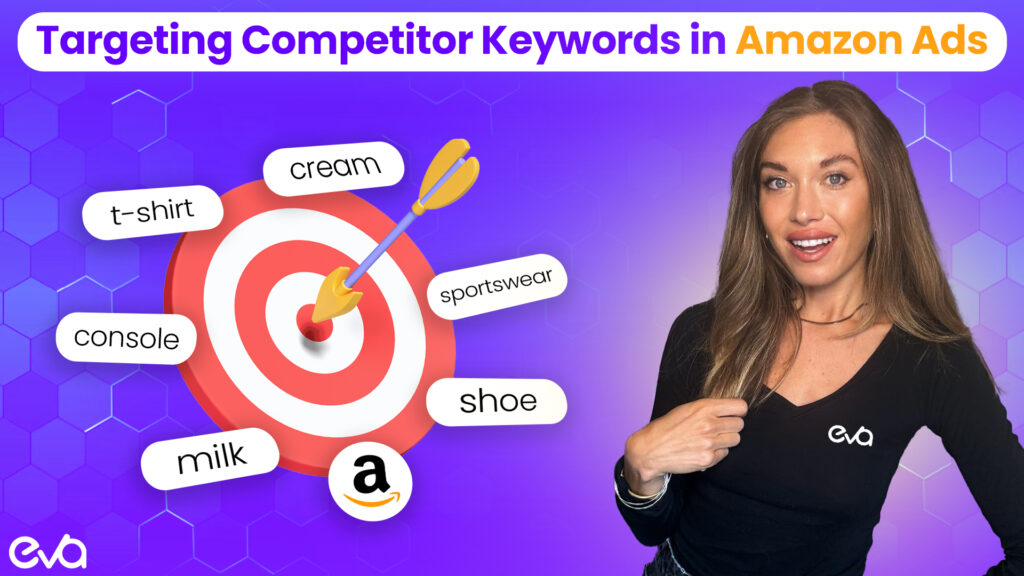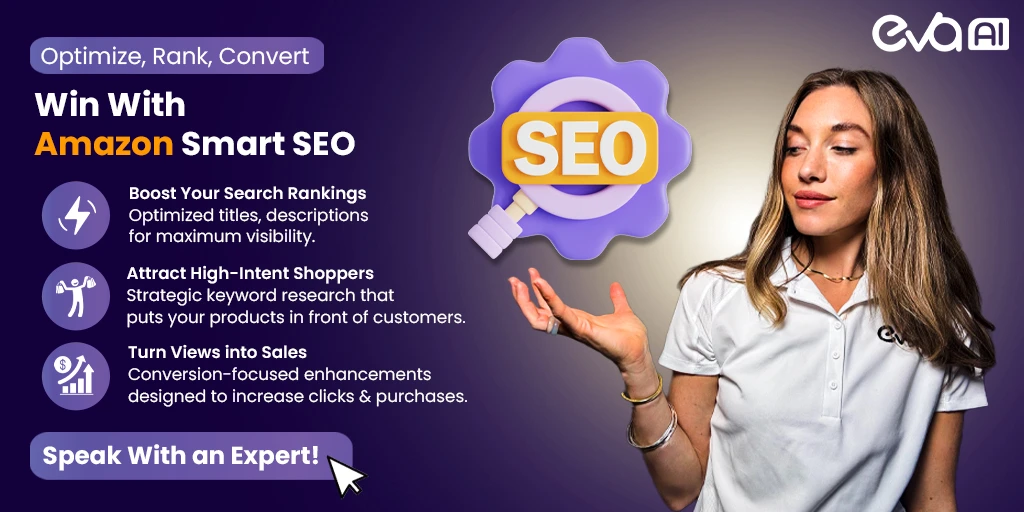Table of Contents
- Introduction
- Why Amazon Competitor Keyword Targeting is a Game-Changer
- Importance of Keyword Research in Amazon Advertising
- Identifying Your Top Competitors on Amazon
- Analyzing Competitor Keywords and Their Performance
- Building a Targeted Keyword List for Your Amazon Ads Campaign
- Implementing Competitor Keyword Targeting in Amazon Ads
- Monitoring and Optimizing Your Competitor Keyword Targeting Strategy
- How Eva Can Help?
- Tracking the Success of Your Competitor Keyword Targeting Campaign
- Conclusion
- FAQs
Introduction
In the ever-evolving landscape of e-commerce, Amazon has emerged as a behemoth, offering unparalleled opportunities for businesses to thrive.
However, with millions of sellers vying for the attention of shoppers, standing out from the crowd has become a daunting task.
This is where the art of targeting competitor keywords in Amazon Ads comes into play, providing a game-changing strategy that can propel your brand to new heights of success.
As a savvy entrepreneur, you understand the importance of staying ahead of the curve, and embracing innovative techniques that can give you a competitive edge.
Competitor keyword targeting is a powerful tool that allows you to capitalize on the search queries and keywords that your rivals are leveraging, enabling you to capture a larger share of the market and outmaneuver your competition.
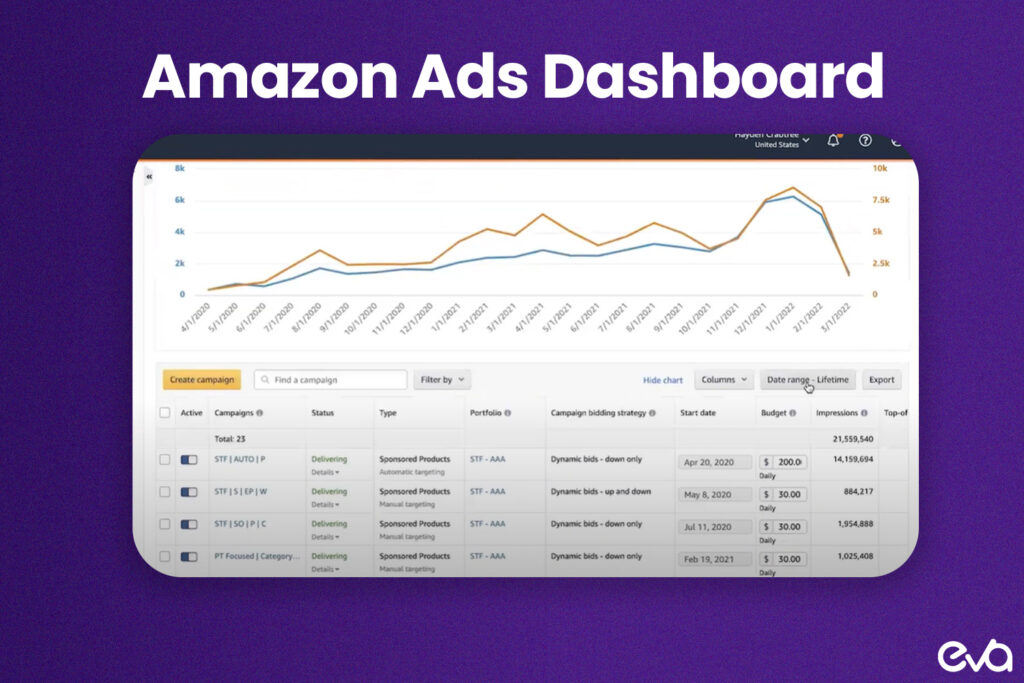
In this comprehensive guide, we’ll delve into the intricacies of this strategic approach, equipping you with the knowledge and insights necessary to master the art of targeting competitor keywords in Amazon Ads.
Get ready to unlock a world of possibilities and elevate your brand’s presence on the world’s largest e-commerce platform.
Why Amazon Competitor Keyword Targeting is a Game-Changer
Amazon competitor keyword targeting is not just another advertising technique, it’s a game-changer. By strategically bidding on keywords used by your competitors, you can secure top spots in search results and dominate your industry.
This means your ads will appear whenever shoppers search for products similar to yours, giving you a significant edge over your competition.
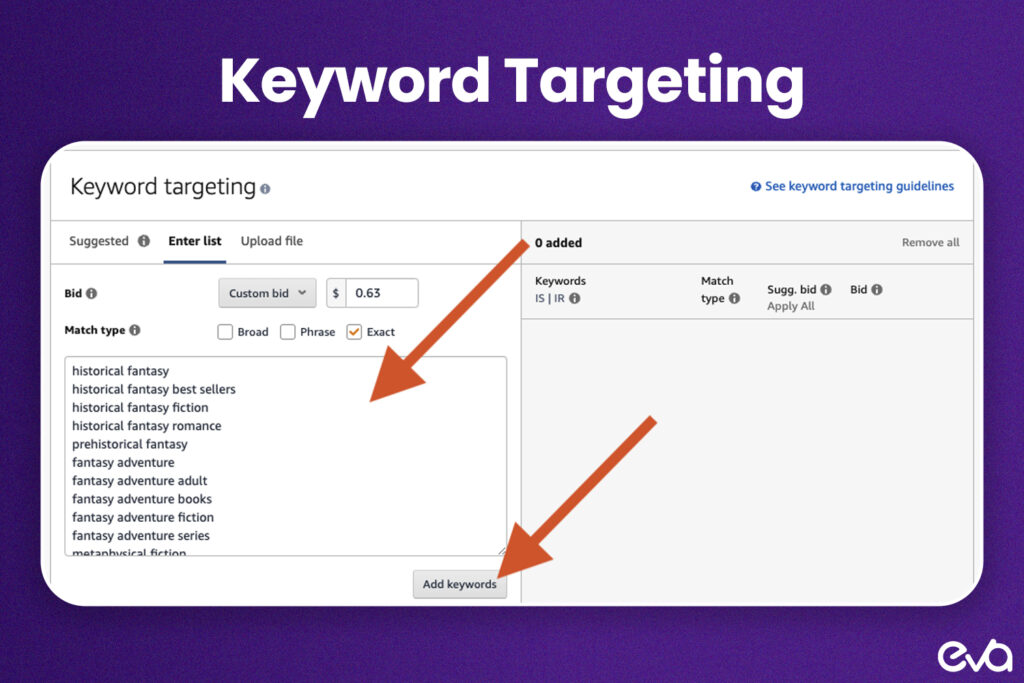
Critical Benefits of Competitor Keyword Targeting in Amazon Ads
- Tapping into Proven Demand: Your competitors’ keywords are already driving traffic. By targeting these keywords, you’re positioning your products in front of a ready-to-buy audience.
- Increased Market Visibility: Competitor keyword targeting helps position your products alongside competitors, giving shoppers an alternative and capturing their attention at crucial decision points.
- Cost-Efficiency and Smart Spending: Amazon PPC Management is your key to efficient spending. It enables you to analyze competitors’ spending patterns and optimize ad spend. By bidding wisely, you can maximize return on investment without overspending, giving you the confidence that every dollar is working for you.Real-Time Insights: Analyzing competitor keywords provides a clear view of their marketing strategy, helping you adapt to shifts and maintain a competitive edge.
- Boosting Amazon Sales Growth: As visibility improves, so does your opportunity for sales growth, allowing your brand to scale effectively in a competitive marketplace.
Importance of Keyword Research in Amazon Advertising
Before implementing Amazon competitor keyword targeting, it’s crucial to understand the fundamentals of Amazon SEO Services and effective keyword research.
Keywords are essential for any advertising strategy, determining which products appear in search results and aligning them with shopper intent.
- Keyword research is the backbone of any successful Amazon Ads campaign. It’s not just about finding the right keywords, it’s about understanding your customers’ intent and aligning your ads with what they’re looking for. Here’s how keyword research powers Amazon Ads:Identifying Customer Intent: By analyzing search trends, you can align your ads with what customers seek, increasing relevance and engagement.
- Optimizing Product Listings: A well-researched keyword list improves not only ads but also product descriptions, titles, and backend keywords, making your listings more discoverable.
- Aligning with Competitor Strategy: Comprehensive keyword research also reveals which keywords competitors focus on, helping you make informed targeting decisions.
- Streamlined Ad Spend: Targeted keywords make ad campaigns more efficient, reducing costs associated with irrelevant clicks and maximizing visibility where it matters.
- Long-Term Amazon Growth Strategy: Your brand builds momentum over time with continuously optimized keywords, leading to higher organic rankings and better returns.
To harness these benefits, make keyword research a core part of your Amazon Marketing Services strategy.
Identifying Your Top Competitors on Amazon
Before you can effectively implement Amazon competitor keyword targeting, you need to know who your main competitors are.
This knowledge is crucial, as it will guide your keyword research and help you understand the strategies you’re up against.
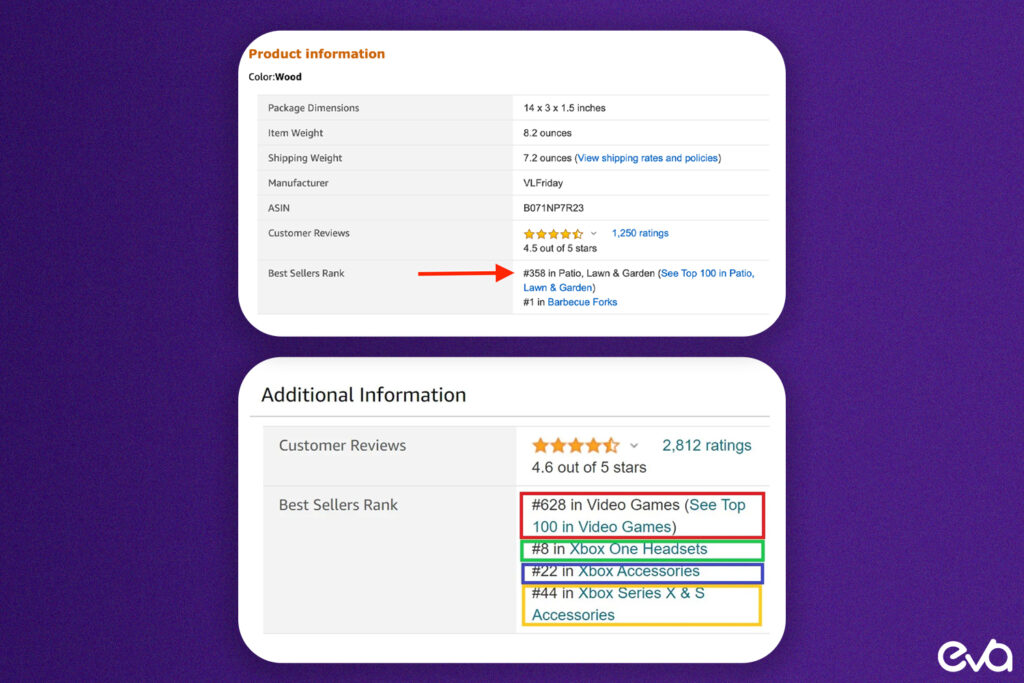
Here are some ways to determine your competitors on Amazon:
- Product Category Analysis: Search for your product category and identify the brands dominating the search results.
- Customer Reviews and Brand Mentions: Review reviews to see which brands customers mention as alternatives. These are often your direct competitors.
- Amazon’s Best Sellers Rank: Explore the Best Sellers Rank for products within your category, as top-ranking brands will likely be your biggest competitors.
- Leveraging Amazon FBA Consulting Tools: Use FBA consulting tools for competitor analysis, which reveals competitor pricing, keywords, and ad strategies.
- Manual Competitor Listings Analysis: Review competitor product listings to understand their keyword focus and potential marketing approach.
With a strong understanding of your competitors, you’re ready to dive into competitor keyword targeting.
Analyzing Competitor Keywords and Their Performance
Once you have a list of competitors, the next step is to analyze the keywords they’re targeting.
This will provide insights into their strategies, allowing you to leverage successful keywords and reach a wider audience.
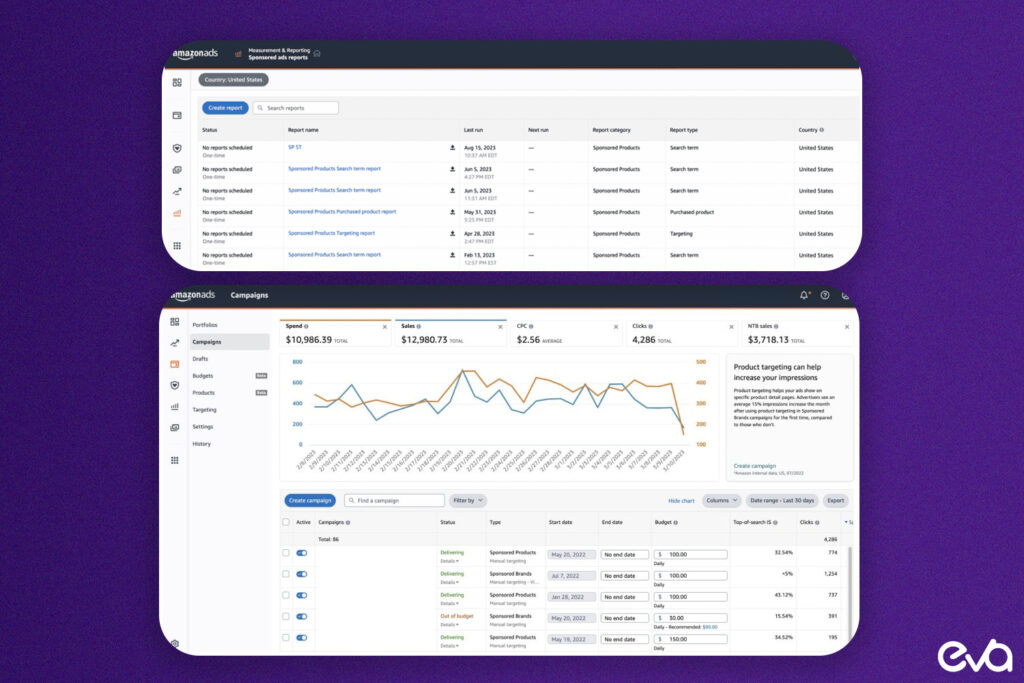
Here’s a breakdown of how to perform a competitor keyword analysis:
Strategies to Analyze Competitor Keywords
- Amazon PPC Tools: Use tools like Amazon’s Advertising Console to see what keywords competitors are bidding on and identify high-traffic keywords.
- Reverse-Engineering Competitor Listings: Review the product titles, bullet points, and backend keywords of competitors’ listings. This helps uncover their keyword focus.
- Utilizing Amazon Search Suggestions: Amazon’s auto-suggested search terms reveal popular queries, providing clues about keywords competitors are targeting.
- Third-Party Keyword Research Platforms: These tools provide detailed data on keyword volume, cost-per-click, and competitor ranking performance.
- Analyze Ad Placement and Frequency: Monitor where competitor ads appear in search results and how often they appear, which can indicate their targeting preferences and bidding aggressiveness.
Understanding your competitors’ keyword strategies is not just about the present, it’s about creating a well-rounded keyword list that can fuel your Amazon Ads campaign for the long term.
By leveraging their insights, you can create a robust keyword list that positions your brand prominently and maximizes ad reach, setting the stage for ongoing success.
Building a Targeted Keyword List for Your Amazon Ads Campaign
With competitor analysis insights, it’s time to compile a targeted keyword list for your campaign. A refined keyword list maximizes ad reach and positions your brand prominently.
Here’s a step-by-step approach:
- Prioritize High-Performing Competitor Keywords: Focus on competitor keywords with high search volume, which can direct considerable traffic to your listings.
- Identify Unique Keyword Opportunities: Look for keywords your competitors are neglecting. These “keyword gaps” can allow you to reach customers competitors are missing.
- Utilize Long-Tail Keywords: Long-tail keywords often need to be more competitive and highly specific, making them practical for driving targeted traffic.
- Organize Keywords by Ad Groups: Grouping keywords by category or target audience segment enhances ad relevancy and helps with ad group optimization.
- Regularly Update Your Keyword List: Keyword trends evolve, so regularly revisiting and updating your list keeps campaigns relevant.
This organized approach to keyword management can be a robust foundation for your Amazon Ads.
Implementing Competitor Keyword Targeting in Amazon Ads
With a targeted keyword list, it’s time to implement competitor keyword targeting.
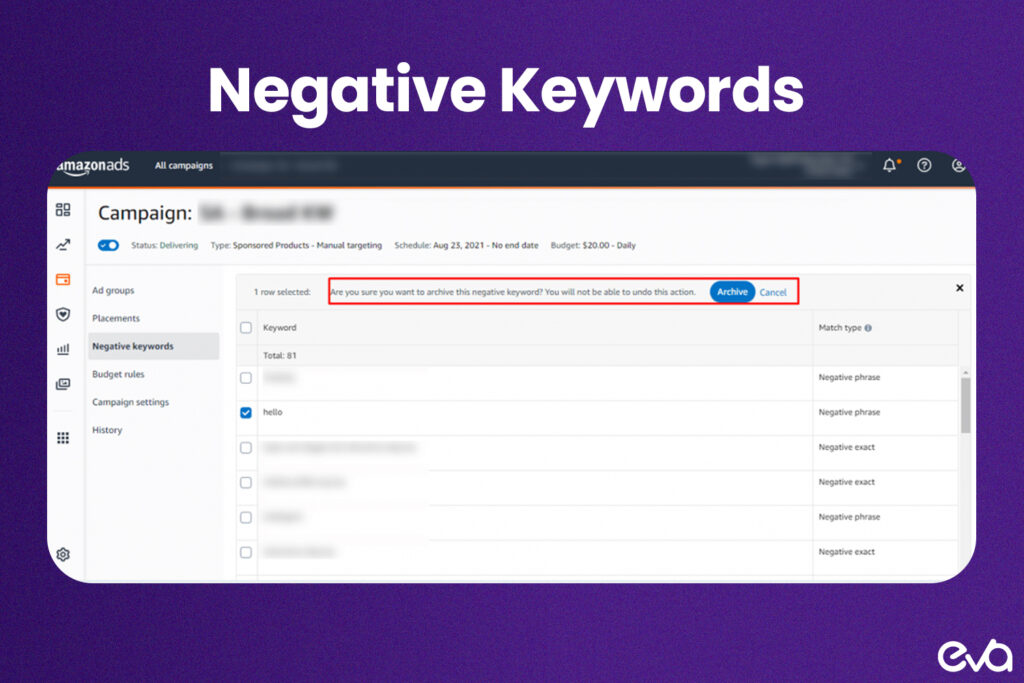
Here’s how to implement these keywords effectively in your Amazon Ads strategy:
Sponsored Product Ads
Sponsored Product Ads allow you to bid on keywords related to competitors’ products, increasing visibility alongside or above your competitors. These ads are essential for capturing high-intent shoppers.
Sponsored Brand Ads
Sponsored Brand Ads are powerful for building brand awareness. These banner-style ads appear at the top of search results, allowing you to showcase multiple products when customers search for competitor keywords.
Sponsored Display Ads
With Sponsored Display Ads, you can retarget audiences who have viewed competitor products. This keeps your brand at the forefront as they continue their shopping journey.
Bid Optimization Strategies
Bid adjustments and dynamic bidding help optimize ad spend on competitor keywords, ensuring maximum visibility without overspending.
Negative Keyword Targeting
Use negative keywords to exclude irrelevant searches, optimizing ad budgets by focusing on the most profitable keywords.
Each ad type and strategy provides unique benefits, allowing you to leverage competitor keywords for optimal results.
Monitoring and Optimizing Your Competitor Keyword Targeting Strategy
Once your campaign is live, continual monitoring and optimization ensure ongoing success. Here are strategies to keep your campaign performing at its best:
- Performance Metrics Tracking: Use metrics like impressions, clicks, conversions, and ACOS to gauge ad effectiveness and refine as needed.
- Monitor Competitor Adjustments: Monitor competitors’ ad placements and keyword strategies, adjusting your bids and keywords to stay competitive.
- Use Amazon Reporting Tools: Amazon’s Advertising Reports and Search Term Reports offer valuable data to optimize keyword targeting.
- A/B Testing: Experiment with ad copy, bid strategies, and product listings to identify effective combinations.
- Regular Keyword List Refinement: Based on performance data, update your keyword list to remove underperforming keywords and add new opportunities.
Continuous optimization is essential for long-term Amazon Sales Growth and ad effectiveness.
How Eva Can Help?
Eva, operated by Eva Commerce, is a leading eCommerce technology company committed to driving profitable growth for brands on Amazon, Walmart, and other major marketplaces.
Eva helps brands refine and execute advertising strategies that maximize visibility, efficiency, and returns through its unique AI-powered platform and expert support team.
The Eva Advantage: A Context-Aware, Data-Driven AI Platform
One of Eva’s standout features is its context-aware AI platform—the only solution that integrates critical data points such as inventory levels, conversion rates, and profitability metrics across all marketplaces, not just Amazon.
With Eva, brands don’t just target high-performing keywords; they do so with a complete understanding of their inventory and profitability, allowing for a finely-tuned strategy that ensures every advertising dollar is working to its maximum potential.
With competitor keyword targeting, for example, Eva’s AI-driven insights ensure brands bid on the most impactful keywords based on real-time inventory data and market conditions.
This capability prevents costly overspending on ads when stock levels are low and strategically boosts ad bids for products with high profitability and conversion potential. In addition, Eva’s platform offers:
- Optimized Bidding for Competitor Keywords: The AI monitors competitor activity and automatically adjusts bids to stay competitive, making real-time adjustments based on trends and consumer behavior.
- Data-Driven Campaign Adjustments: Eva’s AI platform uses sales, ACOS, CTR, and conversion data to optimize ad placements and ad types, ensuring brands are always visible to potential customers without unnecessary ad spend.
- Cross-Marketplace Insights: With access to data from other marketplaces, Eva identifies opportunities for brands to expand their reach beyond Amazon, including Walmart, eBay, and more.
Dedicated Expert Support
Eva’s team of Amazon experts works alongside the AI platform, analyzing data and strategically adjusting campaigns.
With a deep understanding of Amazon Advertising, Amazon Listing Optimization, and Amazon PPC Management, these experts provide data-backed insights to ensure every campaign aligns with business objectives and maximizes ROI.
As an Amazon Advanced Partner and Walmart Strategic Solution Partner, Eva is uniquely positioned to offer industry-leading support.
Additionally, Eva can guide brands on multimedia ad strategies that support holistic growth through partnerships with other top platforms like TikTok, eBay, Shopify, Google, Meta, Wayfair, and Faire.
Sustainable Growth with a Focus on Profitability
Eva is dedicated to delivering sustainable, long-term growth by focusing on profitability. The AI platform prioritizes ads with the highest potential ROI and helps brands reduce wasted ad spend.
By continuously analyzing ad performance and adjusting campaigns based on profitability metrics, Eva ensures that brands grow efficiently without overextending budgets.
Ready to Transform Your Amazon Strategy?
Whether your brand is aiming to leverage competitor keyword targeting or looking for comprehensive Amazon FBA Consulting, Eva has the tools, technology, and expertise to help you succeed.
Let Eva’s AI platform and team of experts take your Amazon Advertising and PPC Management to the next level, capturing market share and driving profitable growth across all marketplaces.
Tracking the Success of Your Competitor Keyword Targeting Campaign
Establish performance metrics aligned with your Amazon growth strategy to assess your campaign’s effectiveness. Here’s what to monitor:
- Sales and Revenue: Track revenue generated by competitor keyword campaigns to measure financial impact.
- Advertising Cost of Sale (ACOS): This metric shows ad spending relative to revenue, helping you assess cost-efficiency.
- Click-Through Rate (CTR): High CTR indicates that your ads capture audience interest.
- Conversion Rate: This reflects how effectively your ads turn clicks into sales, highlighting ad relevance.
- Brand Awareness and Market Share: Track web traffic, social media engagement, and customer feedback for broader insights into brand impact.
These metrics provide a comprehensive view of your campaign’s success and areas for improvement.
Conclusion
Mastering Amazon competitor keyword targeting gives your brand a strategic edge in a crowded marketplace.
By identifying competitors’ keywords, creating targeted ads, and continually optimizing performance, you can harness this powerful tactic to increase visibility, capture market share, and drive sustained growth on Amazon.
Partnering with an experienced Amazon Marketing Agency like Eva can be a game-changer for brands ready to lead in Amazon’s competitive environment.
Our expert guidance and comprehensive services in Amazon PPC Management, Amazon Listing Optimization, and Amazon Account Management empower brands to achieve robust, scalable growth. With Eva, your brand can rise above the competition, maximizing every opportunity that Amazon’s platform offers.
Ready to dominate the Amazon marketplace? Embrace competitor keyword targeting with Eva and unlock a pathway to long-term success, profitability, and growth.
FAQs
Amazon competitor keyword targeting involves bidding on keywords that competitors use to attract customers to similar products. This approach allows your brand to appear in search results when potential buyers are exploring competitor products, helping you reach motivated shoppers and capture market share. It’s a powerful strategy for increasing visibility, driving conversions, and standing out in a crowded marketplace.
Eva’s unique AI platform integrates real-time data like inventory levels, conversion rates, and profitability metrics to ensure ad campaigns are always optimized. This context-aware approach prevents overspending on ads when inventory is low and prioritizes profitable products, making competitor keyword targeting more effective and efficient. The platform’s data-driven adjustments keep your campaigns aligned with the best opportunities for ROI.
General keyword targeting focuses on keywords that relate to your products, aiming to reach a broad audience interested in your category. Competitor keyword targeting, on the other hand, targets keywords specific to your competitors, capturing shoppers who are already considering similar products. This focused strategy helps attract shoppers at critical decision-making moments, boosting conversions and visibility.
Competitor keyword targeting complements other Amazon advertising strategies, such as Amazon PPC Management and Sponsored Brand Ads. By reaching shoppers who are already interested in similar products, it maximizes visibility and boosts ad performance. Combined with other targeting tactics, this approach helps create a well-rounded Amazon growth strategy, driving sales and increasing brand awareness.
Identifying relevant competitors involves analyzing top brands in your product category, exploring Best Sellers Ranks, and using Eva’s competitive analysis tools. By observing which competitors frequently appear in top search results and gathering insights from customer reviews, you can pinpoint which competitors are worth targeting. Eva’s platform also offers data on competitors’ ad placements and keyword strategies, giving you an edge.
Sponsored Product Ads and Sponsored Brand Ads are highly effective for competitor keyword targeting. Sponsored Product Ads allow your listings to appear directly next to competitors in search results, while Sponsored Brand Ads help showcase your brand when shoppers search for competitor products. Both ad types increase visibility and give you a chance to sway potential buyers in favor of your products.
Eva’s AI platform continuously monitors campaign performance using metrics like sales, ACOS, CTR, and conversion rates. This data-driven approach helps Eva adjust bids, targeting, and budgets to ensure your ads remain profitable. Additionally, the platform’s integration of inventory and profitability data allows campaigns to stay responsive to market changes, focusing ad spend where it delivers the most impact.
Effective keyword lists should include high-performing competitor keywords, long-tail keywords, and any gaps your competitors may have missed. Segment keywords by relevance or audience for more targeted ad groups, and revisit the list regularly to adapt to changing market trends. Eva’s keyword insights and tools streamline this process, helping you develop a focused, high-performing list that boosts visibility and relevance.
Regular optimization is essential for maintaining a successful competitor keyword targeting strategy. Eva recommends reviewing campaign performance metrics like CTR, ACOS, and conversions weekly or bi-weekly. Using Eva’s advanced reporting tools, you can track which keywords are driving results and make adjustments to bids, ad copy, or keyword lists to stay competitive and profitable.
Eva’s AI-powered platform offers a suite of tools designed to support Amazon Account Management, Amazon Sales Growth, and Amazon Listing Optimization. By integrating ad performance data with profitability metrics and inventory insights, Eva provides a holistic approach to advertising. This ensures that brands maximize returns on Amazon while maintaining sustainable growth across all marketplaces.

